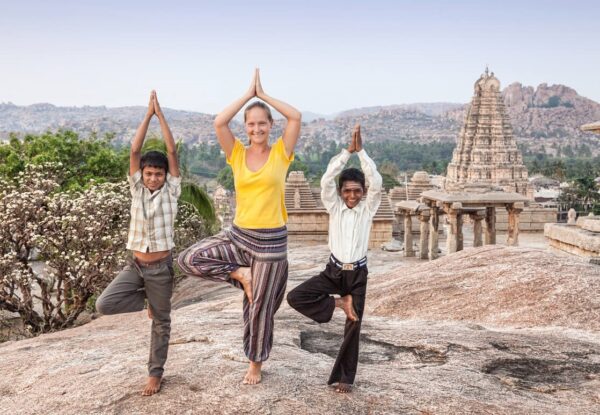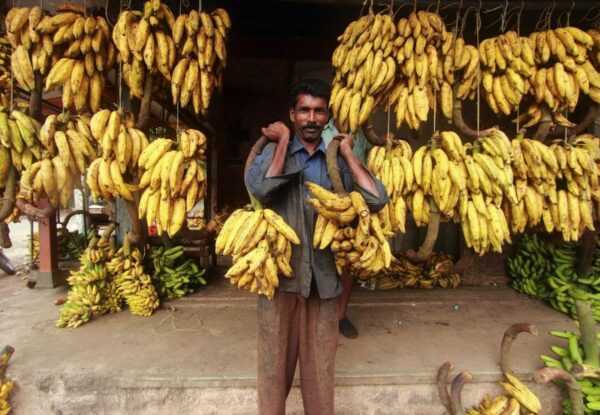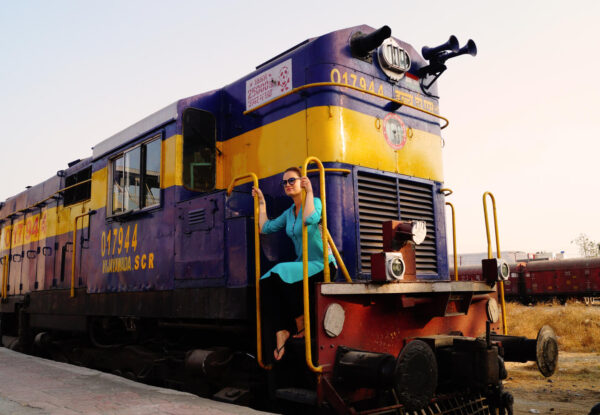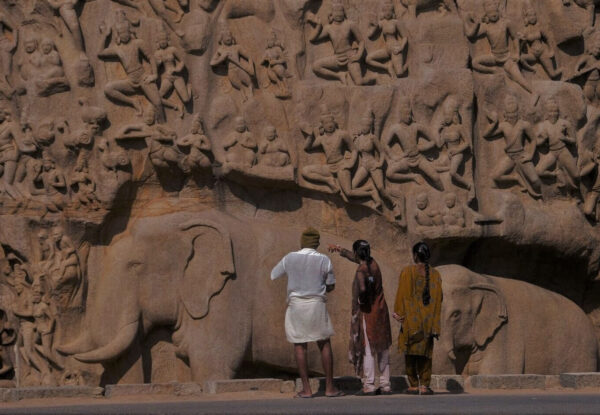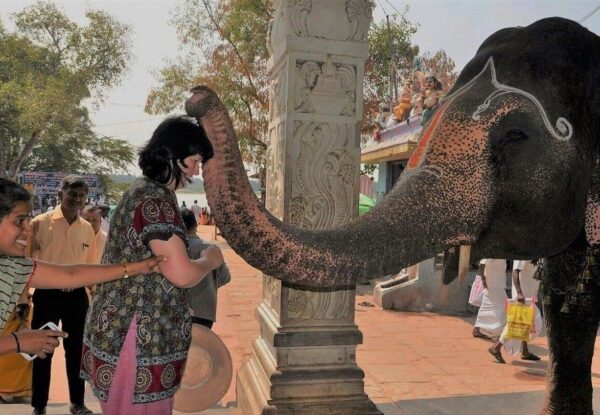Highlights of Mumbai To Chennai Tour
Trip Details
From Mumbai to Chennai, visit incredible India. In this tour, you’ll experience both adventure and leisure in equal measure. The most cosmopolitan Indian city, Mumbai, is a good place to start. Goa’s gorgeous beaches and Wayanad’s lush tea and coffee farms await you after an overland journey over the Western Ghats. After returning to the shore, take a houseboat tour through the gentle Kerala’s backwaters. In the end, we make our way across the state of Tamil Nadu to see the beautiful Meenakshi temple of Madurai and the rock-cut caves of Mahabalipuram. Passing through a section of the nation that most tourists never get to visit we will arrive in Chennai to conclude our Indian adventure.
- Discover the origins of Kathakali dances
- Pondicherry is a place where you may find Gallic influences
- In Kerala, meet the locals over a cup of chai
- Cross into Kochi, India’s southwest colonial capital and important port city
- Explore the Fort Kochi region, which is located on the coast
- Take a stroll around Hampi, a historic imperial city
- From Kanyakumari, the subcontinent’s southernmost point, look out across the Indian Ocean
- Relax on Goa’s and Varkala’s beaches
- When it comes to India, the adjective ‘colorful’ is often used, the Meenakshi Amman Temple’s entrance towers are a technicolor fantasy
- Mahabalipuram’s historic cave temples are a must-see
- Consider regal life at Mysore’s Maharaja’s Palace
- In Chettinad, take up the challenge of a spicy fish or chicken curry
- From Mumbai to Goa, take a scenic coastal train trip
- The antique sculptures in the temples of Belur and Halebidu will leave you speechless
- Look for wild elephant herds in Wayanad and hike up to Chembra Peak

India your way, your route, your style
• Price based on two persons in a double room
• Prices are in USD Excluding international flights
• Do you prefer to travel alone or would you like to come to India with a group of friends? We will be happy to tailor-made your tour program that meets all your wishes and needs
| Travel Period | PRICE PER PERSON | |
|---|---|---|
| Apr 1, 2024 – Mar 31, 2025 | from $3245 (Standard) | INQUIRE NOW |
| Apr 1, 2024 – Mar 31, 2025 | from $3695 (Deluxe) | INQUIRE NOW |
| Apr 1, 2024– Mar 31, 2025 | from $4475 (Luxury) | INQUIRE NOW |
Would you like to have the trip tailored to your wishes?
Our itineraries are only examples and suggestions and can be customized individually. For example, a trip can be shortened or extended with additional destinations or monuments, the hotels can be a mix of 4 and 5 star etc. Let us know your personal wishes so that we can adapt the trip to your wishes. Connect with our travel expert for a 1:1 consultation and receive your obligation free travel proposal. Together with the travel request we will send you the hotel list so that you can get a picture of the hotels selected on the internet. We promise ✔Competent and Friendly Guides ✔Expert Drivers ✔Best Hotels ✔24/7 Support. Read more on Why Vacation India?
Get in Touch: info@vacationindia.com / +91-99274-65808 (India Calling & Whatsapp) / USA/Canada: 1 (888) 414-6804
Services included in the tour price
- 23-night accommodation in the mentioned hotels or similar with daily breakfast
- Road travel by exclusive air-conditioned car Toyota Innova
- All visits of sights as per the itinerary
- Boat Safari in the Periyar Wildlife Sanctuary
- Boat ride to Elephanta caves in Mumbai
- Jeep Safari in Wayanad Wildlife Sanctuary
- Visit to a Kathakali dance show and Kalaripayattu martial arts show i Thekkady
- Entrance Fee for monuments as per the itinerary
- Free mineral water (2 liters) per person per day
- A local English speaking tour guide will be provided for the sightseeing tours
- Representative to assist with arrival and departure transfers
- All applicable taxes and service charges
- All taxes, driver allowances, toll, parking, fuel charges, interstate taxes, etc.
- 24×7 Support in India
Not included in the price
- International Flight
- Domestic Flights
- First Class Train Journey from Mumbai to Goa
- Hiking to Chembra Peak in Wayanad
- Optional Tours
- Lunch and Dinner
- Visa & Insurance
- Expense of personal nature like tipping, laundry, telephone/fax calls, alcoholic beverages, camera/video camera fee at monuments, medical expenses…
There are no reviews yet. Be the first one to write one.
To receive the list of Hotels selected for this tour, please email us at info@vacationindia.com
Keywords: mumbai to chennai tour, tour of mumbai to chennai, chennai to mumbai tour
Similar Tours You May Like
Best of North and South India in 28 Days
Old and New Delhi ➜ Udaipur ➜ Ranakpur ➜ Jodhpur ➜ Deogarh Palace Heritage Hotel ➜ Jaipur ➜ Ranthambore Tiger Reserve ➜ Agra ➜ Fatehpur Sikri ➜ Orchha ➜ Khajuraho ➜ Varanasi (Ganges) ➜ Chennai ➜ Kanchipuram ➜ Mamallapuram ➜ Tanjore (Thanjavur) ➜ Trichy ➜ Chettinad Region ➜ Madurai ➜ Munnar ➜ Thekkady (Periyar Tiger Reserve) ➜ Alleppey (Houseboat Kerala Backwaters) ➜ Kumarakom ➜ Mararikulam Beach ➜ Kochi ➜ Chennai/Mumbai
Pride of Karnataka – The Golden Chariot Train Journey through Karnataka
Bengaluru ➜ Bandipur National park ➜ Mysore (Srirangapatna) ➜ Halebidu ➜ Chikmagalur ➜ Hampi ➜ Badami, Aihole and Pattadakal ➜ Goa ➜ Bengaluru
South India Tour – Best of Tamil Nadu and Kerala (15 days)
Chennai ➜ Kanchipuram ➜ Mahabalipuram (Mamallapuram) ➜ Pondicherry (Puducherry) ➜ Tanjore (Thanjavur) ➜ Trichy (Tiruchirapalli) ➜ Chettinad Region ➜ Madurai ➜ Munnar ➜ Thekkady (Periyar Tiger Reserve) ➜ Alleppey (Houseboat Kerala Backwaters) ➜ Kumarakom ➜ Mararikulam Beach ➜ Kochi ➜ Chennai
Golden Chariot Train Journey – Jewels of South
Bengaluru ➜ Mysore ➜ Hampi ➜ Mahabalipuram ➜ Thanjavur and Chettinad ➜ Kumarakom (Houseboat & Backwaters) ➜ Cochin ➜ Bengaluru
Grand South India Tour (31 Days)
Chennai (Madras) ➜ Kanchipuram ➜ Mahapalipuram (Mamallapuram) ➜ Pondicherry ➜ Darasuram & Gangaikondacholpuram ➜ Tanjore ➜ Trichy ➜ Chettinad ➜ Madurai ➜ Rameswaram ➜ Kanyakumari ➜ Kovalam ➜ Alleppey (Houseboat Tour) ➜ Kumarakom ➜ Periyar Tiger Reserve ➜ Munnar (Tea Plantations) ➜ Cochin (Kochi) ➜ Ooty ➜ Kabini and Nagarhole NationalpPark or Bandipur National Park ➜ Mysore (Srirangapatnam & Somnathpur) ➜ Hassan (Belur und Halebidu) ➜ Hampi ➜ Aihole & Pattadakal ➜ Badami ➜ Goa ➜ Chennai / Mumbai
Treasures of South India – Best of Tamil Nadu, Kerala and Karnataka (19 days)
Chennai ➜ Mahabalipuram ➜ Kanchipuram ➜ Puducherry ➜ Thanjavur ➜ Chettinad ➜ Madurai ➜ Thekkady (Periyar Tiger Reserve) ➜ Alleppey Backwaters ➜ Kochi (Cochin) ➜ Ooty ➜ Bandipur National Park ➜Mysore (Mysuru)➜ Shravanabelagola ➜ Belur and Halebidu ➜ Ancient City of Hampi ➜ Aihole and Pattadakal ➜ Badami ➜ Goa Beaches
Tropical Kerala with Madurai detour (15 days)
Kochi (Cochin) ➜ Houseboat through Backwaters ➜ Kumarakom ➜ Kovalam Beach ➜ Thekkady (Periyar Tiger Reserve) ➜ Madurai (Meenakshi Temple) ➜ Munnar (Tea Plantations) ➜ Mararikulam Beach
South India Wildlife and Trekking Tour
Madikeri (Coorg) ➜ Nishani Motte Trek ➜ Namdroling Monastery ➜ Kabini Wildlife Sanctuary ➜ Nagarhole National Park ➜ Ooty ➜ Pollachi ➜ Anamalai Tiger Reserve or Parambikulam Tiger Reserve ➜ Munnar ➜ Eravikulam National Park Madurai ➜ Chinnar Wildlife Sanctuary (Thoovanam Waterfalls) ➜ Madurai (Meenakshi Temple) ➜ Chennai



